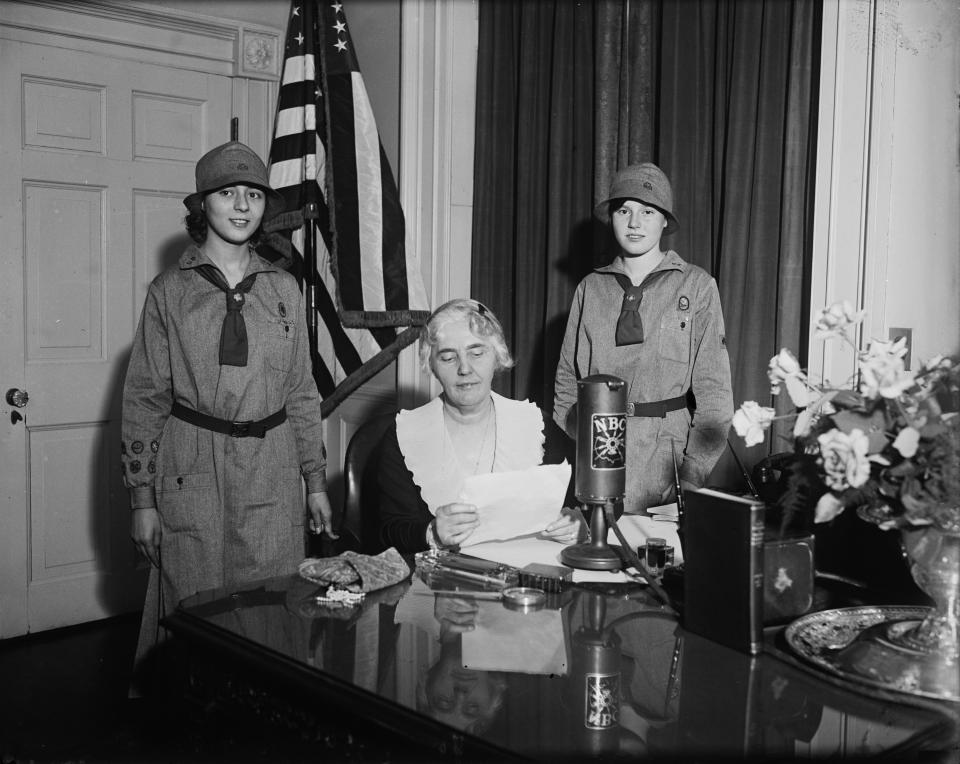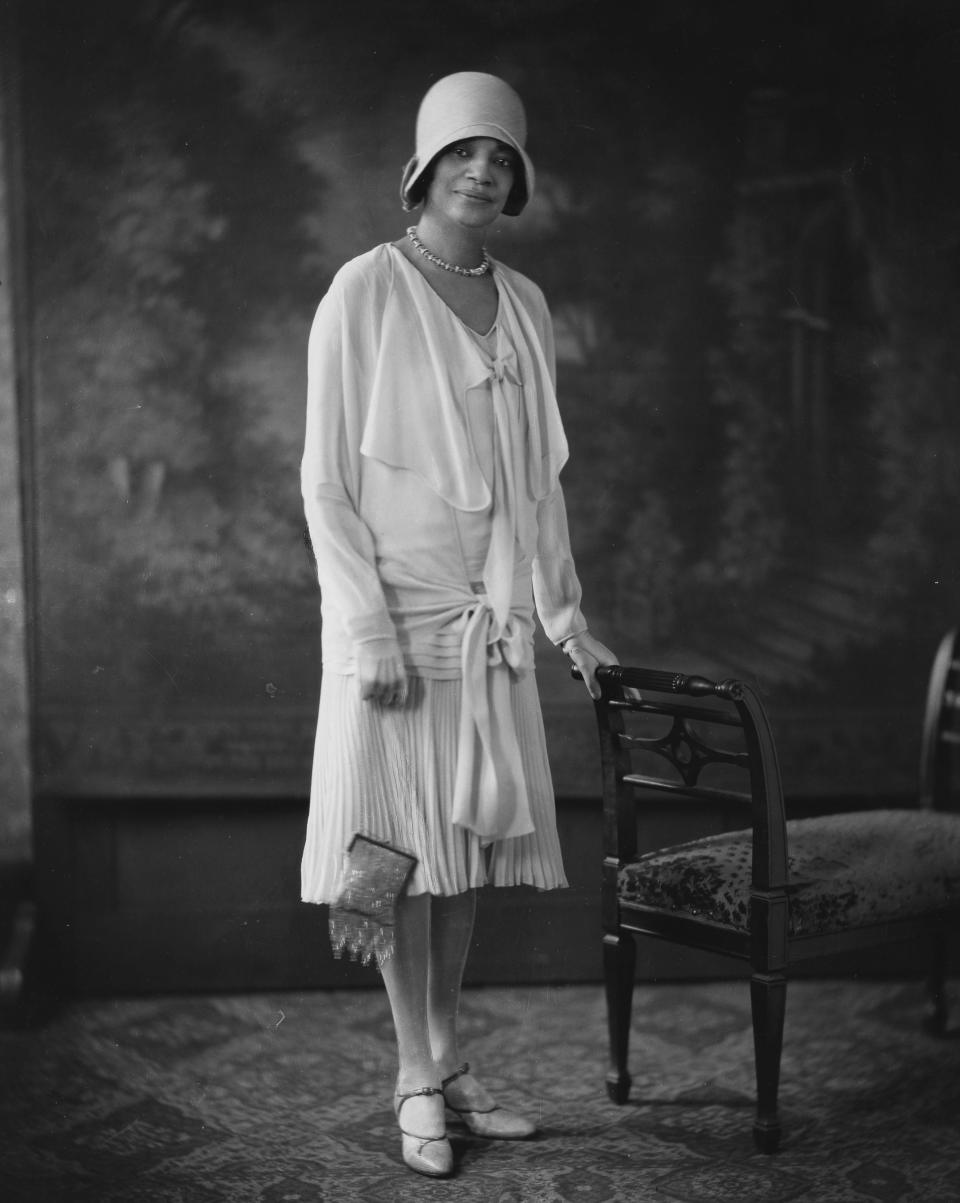Iowa History Month: How Iowan Lou Henry Hoover became the first 'modern' First Lady
Future First Lady Lou Henry was born in Waterloo in 1874 and spent her first 10 years there and Shell Rock. In 1884, her parents, Florence Ida Weed Henry and Charles Delano Henry, moved the family to California for the more agreeable climate. This suited young Lou, and she frequently enjoyed the outdoors with her father.
After graduating from a California teacher’s college, she enrolled at Stanford University where she met fellow Iowa native Herbert Hoover. They both studied geology. Because the future presidential couple valued education, they delayed their marriage until after Lou’s graduation. They married at the Henry family home and sailed the next day for China, where Herbert had a job managing mining operations. The Hoovers relocated for Herbert’s mining career several times, taking posts across the globe. Along the way, sons Herbert, Jr. (1903) and Allan (1907) were born.
After finding financial security in the mining industry, Herbert led famine relief efforts during World War I, with Lou assisting, and as Secretary of Commerce for presidents Warren G. Harding and Calvin Coolidge. His governmental positions elevated her work and offered her a platform to challenge social norms and eventually be the first “modern” First Lady.

Lou Hoover became active in Girl Scouts shortly after its establishment in 1912. She was elected vice president in 1917, and president in 1922. In 1925, she resigned to become executive board chair. During her leadership tenure, she expanded the organization by recruiting girls and disseminating a positive public image for Girl Scouts, most notably by overseeing the publication of “The American Girl,” the organization’s monthly magazine.
She later provided leadership to keep the organization functional throughout the Great Depression and, perhaps most notably, she transformed Girl Scout Cookie sales from local, homemade cookies to the nationwide, commercially baked effort we know today.
Lou’s groundbreaking efforts were not limited to youth organizations and civic-minded causes.
The first woman to graduate from Stanford with a geology degree, Lou continued to challenge societal norms. Her tenacity showed when she invited congressional spouse Jessie L. DePriest of Chicago, Illinois, to tea at the White House. DePriest was married to Oscar DePriest, the only Black person in Congress.
When the Hoovers moved into the White House in 1929, Lou began hosting teas for political wives. She and her staff carefully planned the events and divided attendees into groups alphabetically. She altered the order for DePriest, inviting her to an integrated fifth tea where guests included the wives of three congressmen from the less-bigoted states of California, New York and Pennsylvania, as well as spouses of three cabinet secretaries. She hoped to avoid offending white Americans or inviting uncouth behavior from attendees. This racially integrated tea incited racist hostility across the country, especially among white Southerners. When the uproar ensued, all correspondence was routed to the President’s Office.

Lou’s bold decision to invite DePriest to the White House was summarized in the Des Moines Register: “The present White House host had to include the wife of the Negro congressman in some one of the series of teas - or else be guilty of a discrimination so wanton that it would be construed an injustice.” While racist diatribes were published against the Hoovers across the country, the national Black press spoke in glowing terms and the Chicago City Council passed a resolution calling Lou “courageous.”
The rage toward her and President Hoover over the DePriest incident continued for six months. Lou was steadfast in her decision to include DePriest and never wavered from this effort at inclusivity. This was not necessarily a position that the president shared, as he rarely mentioned civil rights issues.
After losing the 1932 election, the Hoovers returned to their home in Palo Alto, California. They later split time between that home and New York. Lou died of a heart attack in January 1944 and was buried in Palo Alto. She was later interred in West Branch next to her husband in 1964. Lou’s papers were restricted until 1984, so it’s only been in the last 40 years that much of her work has come to light to researchers.
The way we remember her continues to evolve. There are statues in her hometown of Waterloo, and, in 2005, the Waterloo Community School District opened Lou Henry Elementary. No doubt, the brave and groundbreaking work of Lou Henry Hoover shaped our world, and that’s worth remembering when you crack open a box of Girl Scout Cookies.
Jess Rundlett works as special projects and outreach coordinator at the State Historical Society of Iowa and formerly served as a park ranger at Herbert Hoover National Historic Site.
March is Iowa History Month
To celebrate Iowa History Month, the Register has published weekly essays from leading state historians.
This article originally appeared on Des Moines Register: Iowa History Month: Thank Lou Henry Hoover for Girl Scout Cookies

